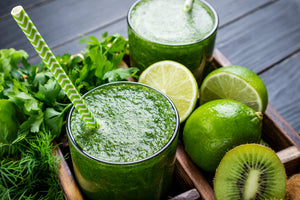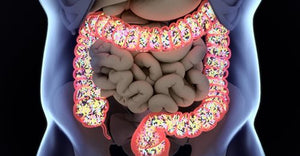Autumn Allergies – Please Pass the Tissues

As the cooler weather blows in, it is not uncommon to throw open the windows to air out the home, while simultaneously enjoying crisp cool nights. Unfortunately, for many, coexisting with nature and the fresh air only spawns misery in the form of sneezing, congestion, itchy and watery eyes. Just like spring all over again.
The warm summer months served as a prime growing season for various weeds, which, in full maturity, utilize the cool and breezy fall weather to shed and spread their pollen. Ragweed pollen is among the most common culprits for triggering fall allergies. Releasing pollen from August to November, ragweed is native to a vast majority of American soil, making it virtually impossible to escape.
Similarly, as the fall season progresses, piles of damp leaves and morning dew provide a perfect breeding ground for mold to flourish and release allergenic spores. Mold may not only assault allergy sufferers from outdoors, but can be equally troublesome indoors when the furnace is turned on for the first time, releasing a mass of mold spores that have been hiding among the dirty crevices of the furnace ducts.
QUERCETIN
Supporting the body in its fight against fall allergens becomes the focus of many individuals. Many helpful botanicals can serve this role; however, quercetin excels in this battle. Quercetin is known as a bioflavonoid and is prevalent within apples, onions, grapefruit, red wine, and black and green teas. It is particularly useful in supporting the mucus membranes during exposure to various fall allergens. Mucous membranes are a significant part of our respiratory system and help to protect the delicate cells of the respiratory tract from invaders. Pollen and mold spores are deemed unwelcome invaders that trigger a cascade of events intended to eliminate or neutralize the invaders. This series of events often results in a runny, itchy nose, sneezing, watery eyes and nasal congestion. Quercetin has been relied upon for centuries to help the mucus membranes respond appropriately to allergens by acting as a mediator and helping the body’s natural defense system interact with the allergens in a healthy way. Specifically, quercetin focuses on aiding the white blood cells responsible for transmitting messages and releasing chemicals in response to allergens. Histamine is one chemical released by white blood cells during allergen exposure, and it is responsible for the plethora of annoying signs that follow. Quercetin helps white blood cells react to allergens with a healthy histamine response. It is also useful in supporting the respiratory tract, so it can maintain clear air passage during allergen exposure. So as the weather turns cooler, quercetin may be something to look forward to just as much as pumpkins and scarecrows.
MOLD AND VITAMIN D
Mold allergies are particularly complicated. In apparently healthy individuals, seasonal mold spores may not be any more bothersome than weed pollen, but in other individuals, mold exposure can create chaos in the respiratory tract.
Aspergillus fumigatus is the most frequently encountered fungus both in the home and outdoors. The cells of the respiratory tract act as the fist line of defense, explaining why their health is so important during exposure to mold. Vitamin D can play a significant role in supporting the respiratory tract so it can respond to mold spores in a healthy way. Researchers have discovered that mold spores have the unique ability to identify and claim possession of vitamin D receptors in the airway. Therefore, maintaining adequate vitamin D levels is important so that empty vitamin D receptors are not available for mold spores to possess. Additionally, adequate vitamin D can help the body maintain a healthy inflammatory response to mold exposure. Unfortunately, vitamin D deficiencies are notorious among individuals and replenishing a less-than-optimal vitamin D level can take time. Therefore, it is advantageous to try to attain optimal vitamin D levels prior to the fall season in order to offer the body full support against allergens.
Many botanicals and nutrients can support the health of mucus membranes and the respiratory tract during allergy season. However, quercetin and vitamin D, in addition to a healthy diet that includes plenty of fresh fruits and vegetables, are foundational in maintaining healthy responses to these seasonal invaders.
Sources
Hattori et al. (2013). Quercetin inhibits transcriptional up-regulation of histamine H1 receptor via suppressing protein kinase C-δ/extracellular signal-regulated kinase/poly(ADP-ribose) polymerase-1 signaling pathway in HeLa cells. International Immunopharmacology. 15(2):232-9. doi. 10.1016/j.intimp.2012.12.030.
Weng et al. (2012) Quercetin is more effective than cromolyn in blocking human mast cell cytokine release and inhibits contact dermatitis and photosensitivity in humans. PLoS ONE. 7(3): e33805. doi:10.1371/journal.pone.0033805
Sakai-Kashiwabara, M. and Asano, K. (2013). Inhibitory action of quercetin on eosinophil activation in vitro. Evidence-Based Complementary and Alternative Medicine. Article ID 127105, 7 pages, 2013. doi:10.1155/2013/127105
Joskova, M., Franova, S., and Sadlonova, V. (2011). Acute bronchodilator effect of quercetin in experimental allergic asthma. Bratislavske Lekarske Listy. 112(1):9-12.
Li et al. (2015). Activation of vitamin D regulates response of human bronchial epithelial cells to Aspergillus fumigatus in an autocrine fashion. Mediators of Inflammation, 2015, 208491. http://doi.org/10.1155/2015/208491
- David Brady







Comments 0